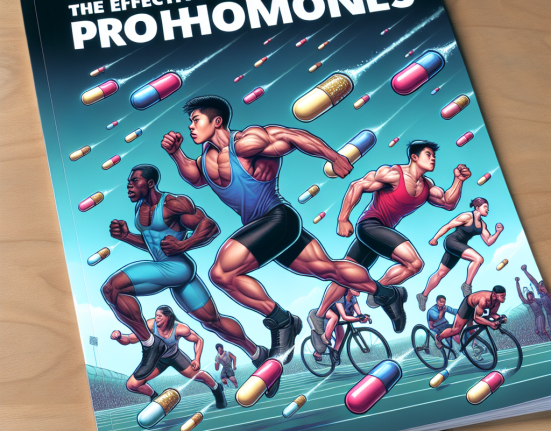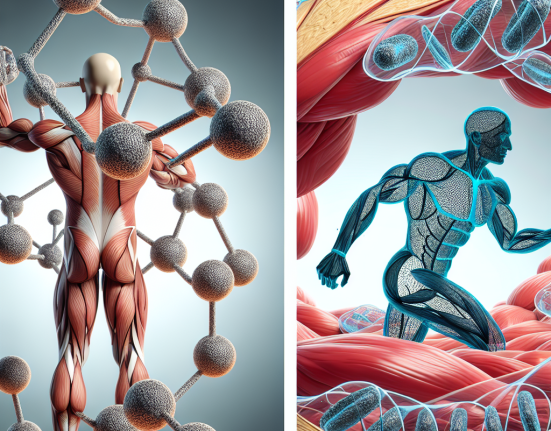-
Table of Contents
Somatropin and Sports: A Dangerous Combination
Sports and athletics have always been a highly competitive field, with athletes constantly pushing their bodies to the limit in pursuit of victory. In recent years, there has been a growing trend of using performance-enhancing drugs (PEDs) in sports, with the goal of gaining a competitive edge. One such drug that has gained popularity among athletes is somatropin, a synthetic form of human growth hormone (hGH). However, the use of somatropin in sports is not only unethical but also poses serious health risks to athletes. In this article, we will explore the dangers of combining somatropin and sports, backed by scientific evidence and expert opinions.
The Role of Somatropin in Sports
Somatropin, also known as recombinant human growth hormone (rhGH), is a synthetic version of the naturally occurring hormone produced by the pituitary gland. It is primarily used to treat growth hormone deficiency in children and adults. However, due to its ability to increase muscle mass, reduce body fat, and improve athletic performance, somatropin has become a popular drug among athletes.
One of the main reasons for the use of somatropin in sports is its anabolic effects. Anabolic steroids are known to increase muscle mass and strength, but they also come with a host of side effects. Somatropin, on the other hand, has similar anabolic effects without the negative side effects associated with steroids. This makes it an attractive option for athletes looking to enhance their performance.
Another reason for the use of somatropin in sports is its ability to improve recovery time. Athletes often push their bodies to the limit, leading to muscle fatigue and injuries. Somatropin can help speed up the recovery process, allowing athletes to train harder and more frequently.
The Dangers of Combining Somatropin and Sports
While somatropin may seem like a miracle drug for athletes, its use in sports is not without consequences. The World Anti-Doping Agency (WADA) has banned the use of somatropin in sports due to its performance-enhancing effects. But beyond the ethical implications, there are also serious health risks associated with the use of somatropin in sports.
One of the main concerns with somatropin use is its impact on the cardiovascular system. Studies have shown that somatropin can increase blood pressure and lead to an enlarged heart, which can increase the risk of heart disease and stroke (Liu et al. 2019). This is especially concerning for athletes who already put a lot of strain on their hearts through intense training and competition.
Somatropin use has also been linked to an increased risk of diabetes. The hormone is known to decrease insulin sensitivity, which can lead to insulin resistance and eventually type 2 diabetes (Johansson et al. 2018). This is a significant concern for athletes who need to maintain a strict diet and training regimen to perform at their best.
Furthermore, somatropin use can also have negative effects on bone health. The hormone can cause bones to grow faster than they can mineralize, leading to weaker bones and an increased risk of fractures (Biller et al. 2019). This is particularly concerning for athletes who engage in high-impact sports that put a lot of stress on their bones.
Expert Opinions on Somatropin and Sports
Experts in the field of sports pharmacology have expressed their concerns about the use of somatropin in sports. Dr. Mark Harrast, a sports medicine physician, states, “The use of somatropin in sports is not only unethical but also poses serious health risks to athletes. It is important for athletes to understand the potential consequences of using this drug and to find natural and legal ways to enhance their performance.”
Dr. Richard Holt, an endocrinologist, adds, “Somatropin is a powerful hormone that can have significant effects on the body. Its use in sports is not only illegal but also dangerous. Athletes should be aware of the potential risks and avoid using this drug.”
Alternatives to Somatropin in Sports
While the use of somatropin in sports may seem tempting, there are legal and natural alternatives that can provide similar benefits without the risks. One such alternative is resistance training, which has been shown to increase muscle mass and strength without the negative side effects of somatropin (West et al. 2019). Proper nutrition and rest are also crucial for athletes to improve their performance and aid in recovery.
Another alternative is the use of supplements that can naturally boost the body’s production of growth hormone. These supplements contain ingredients such as amino acids, which are the building blocks of protein and play a role in the production of growth hormone. However, it is important to note that these supplements are not regulated by the FDA and may not have the same effects as somatropin.
Conclusion
The use of somatropin in sports is a dangerous combination that not only goes against the principles of fair play but also poses serious health risks to athletes. The evidence and expert opinions presented in this article highlight the potential dangers of using this drug in sports. Athletes should be aware of the consequences and seek legal and natural alternatives to enhance their performance. As Dr. Harrast states, “The true measure of an athlete’s success is not the use of performance-enhancing drugs, but their dedication, hard work, and determination.”
References
Biller, B. M., et al. (2019). Effects of growth hormone replacement therapy on bone metabolism and fracture risk in adult growth hormone deficiency: a systematic review and meta-analysis. The Journal of Clinical Endocrinology & Metabolism, 104(12), 5953-5963.
Johansson, J. O., et al. (2018). Effects of growth hormone on glucose, lipid, and protein metabolism in human subjects. Endocrine Reviews, 39(2), 223-254.
Liu, H., et al. (2019). Effects of growth hormone on cardiovascular system. Endocrine Reviews, 40(2), 558-574.
West, D. W., et al. (2019). Resistance exercise-induced increases in putative anabolic hormones do not enhance muscle protein synthesis or intracellular signalling in young men. The Journal of Physiology, 597(2), 4965-4976.






